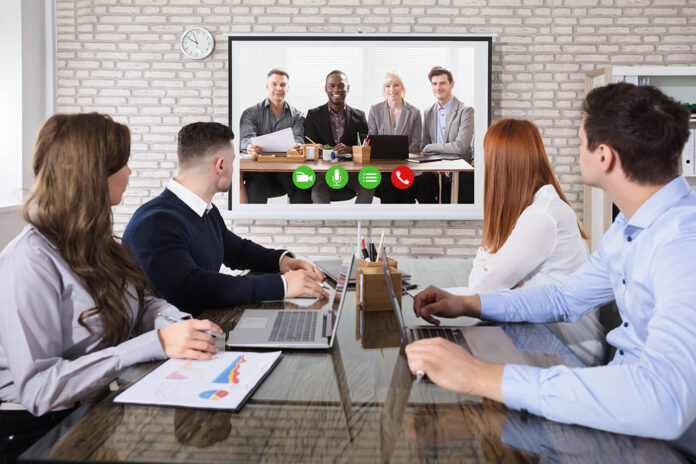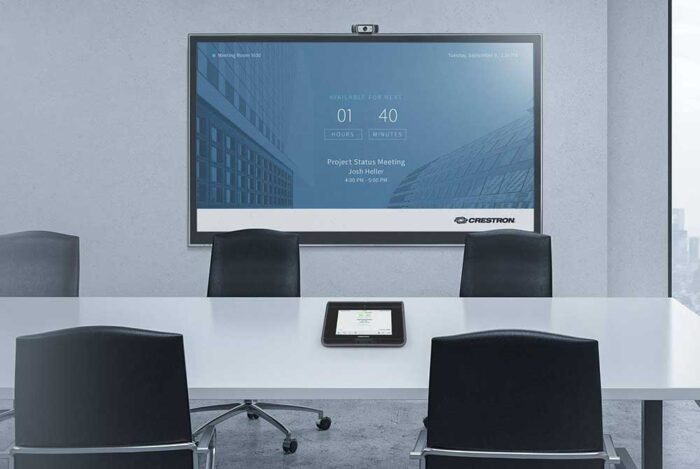
In today’s day and age, we are more than dependant on the technology we’re using. Some would even argue that we’re pretty much incapable of living without our gadgets, and while that very well might be the case, that’s not what we want to talk to you about.
We want to talk to you about the devices and gadgets you are using and how you can streamline them into a single device that would allow you to control every device connected to it. If you’re not sure what we’re talking about – don’t worry – we’ll get there. For now, let’s answer the following question:
What Are The Most Common Devices We’re Using In Everyday Life And Work?

What you do think are those devices? You’d agree with us if we assume that your answer is smartphones, television sets, and laptops or computers. If that was your answer – you were absolutely right. But, those aren’t the only devices and gadgets we use on a daily basis.
Many people also heavily rely on cameras, interactive displays, digital whiteboards, projectors, conference phones, tablets, and so on.
Now, what do all of these devices have in common? All of these devices provide us with audio/visual content in one way or another. Whether we’re communicating with another person or simply consuming content – we’re receiving the information in an audio/visual manner.
Now, if you picture an environment with all these A/V devices in one place – what do you see? We see a conference room in a company that deals with their clients that aren’t in the building. And, we also see a streamer or a content creator in his studio or a bedroom. We also see a lot of other scenarios, but we also see a common problem. Can you guess which one?
What Is The Most Common Problem With A/V Equipment?

The most common problem you’d face with A/V equipment, or better yet, a lot of A/V equipment in one place, isn’t that it breaks easily or that it’s expensive (although the latter is a major problem right now). No. The most common problem with a lot of gear in one place is accessibility, ease of access, and streamlined controls.
Imagine if you have a set up with three screens, two computers, an interactive board, a microphone, a camera, many different lights, and so on. It would be a massive drag to control each of those elements separately, wouldn’t it? Just imagine that you have to hold a meeting with prospective clients, and you need each piece of your setup to work perfectly. It would be very hard to achieve that if you have to operate each piece individually, right?
Well, fortunately for you – there’s a solution. It is called an audio visual control system.
What Are Audio Visual Control Systems?
To put it simply, audio visual control systems are a central core of any audio-visual system. Loosely translated, think of an audio visual control system as a hub through which you can control all of your audio-visual devices. It is a streamlined, simplified interface that can control all of your equipment from a single place, and you can obtain it through this service.
Just to avoid confusion, this is not simply the software we’re talking about. So, in a sense, you will have to rely on another device, but the good thing is – this is the sole device you will have to rely on.
A single audio visual control system could effortlessly run all your A/V devices in a single conference room, or even a streaming setup, although this tech is mostly geared towards the former. However, you could find another use for it. For instance, you could theoretically hook up your entire house to this single hub and control everything from it – from lights to your garage doors.
Why Do We Need Audio Visual Control Systems?

Some would argue that A/V control systems aren’t a necessity, and that’s true – but to a certain degree. They’re not a necessity unless they are. They are absolutely essential in a business setting, especially the one that practically lives from conference calls and meetings with clients and business partners that are abroad. If that’s what you’re doing – you absolutely need a single control hub to control every audio/visual aspect of your meeting.
If we want to further understand why A/V control systems are necessary, we have to take a look at what they’re capable of doing. So, let’s do that.
Streamlining Controls
First of all, it’s all about universal control. Let’s assume that you’re in a situation where multiple people are sitting on a conference call, and you have audio/visual feed from all of them. Naturally, we’re not just talking about a Zoom call but an actual interactive meeting with various A/V tools.
If you can control which person speaks at which moment, and you can control what shows up on the screen, who gets the spotlight at each given moment, and stuff like that – you’re going to have a massively productive meeting. Also, if few people in the room are supposed to talk, it is much easier to switch video and audio feed from one person to another by switching the input through an A/V control system than it is to physically move the camera and microphone from one person to the other, or something along those lines.
Complete Control Over All Devices

A/V control systems do a lot more than just switching between various inputs. A control system has complete control over all the devices connected to it. At a push of a button, or better yet, a touch on the screen, you can turn your devices on and off, have them record, stream, or whatever it is that they do.
You can also connect lights, thermostats, or even smart doors to your control system. That will allow you to dim the lights in the room while someone’s giving a presentation, adjust the temperature, or even lock the doors so that you’re not disturbed, and so much more.
Final Thoughts
As you can see, there are a lot of things audio visual control systems are good for. From making your conference room as efficient as possible, all the way to making your whole house in a smart, one-device controlled system.
The possibilities of this device and service are pretty much endless if you really think about it. With enough resources and advancements, it is a matter of time before you a device like this becomes your personal assistant. But, we’ll cross that bridge when it happens.
For now, we just hope you’ve learned enough about the possibilities of a device such as this one, and that you’ve understood its value in today’s society.
















